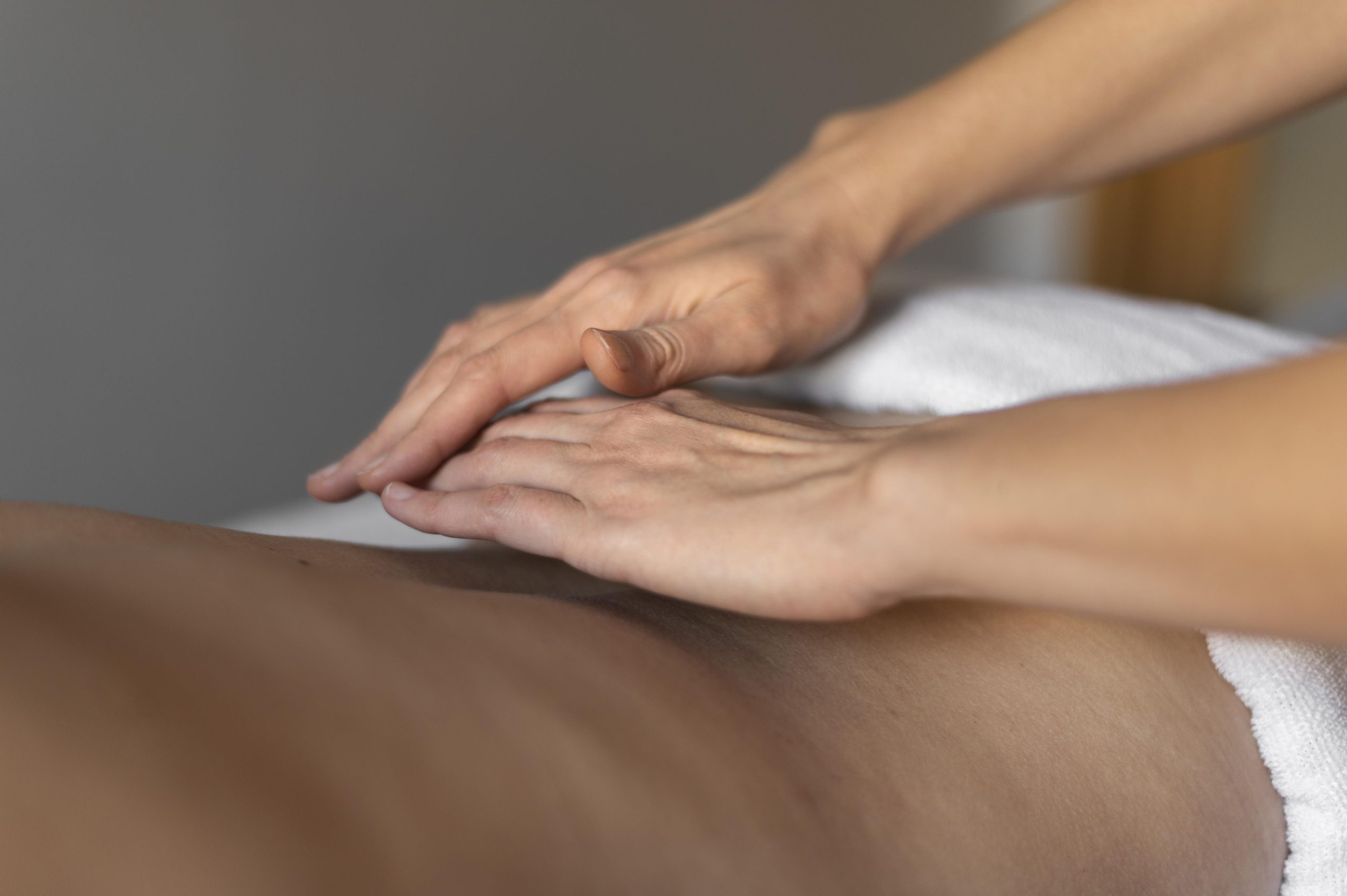Health
How Circuhealth Clinic’s Treatment Will Benefit You: A Comprehensive Guide

Maintaining optimal health can be challenging in the modern world. Busy lifestyles, poor dietary habits, and the stress of daily life can all contribute to a decline in our overall well-being. Circuhealth Clinic Clinic, led by the renowned Nadia Nassif, offers a holistic approach to health by improving circulatory health through various advanced, non-invasive treatments.
The Importance of Circulatory Health
Circulatory health is fundamental to overall wellness. The circulatory system is responsible for delivering oxygen and nutrients to every cell in the body and removing waste products. When this system is compromised, it can lead to a host of health issues, including chronic fatigue, poor skin health, and even cardiovascular diseases. Improving circulation can enhance energy levels, support organ function, and promote overall vitality.
Personalized Exercise Programs
One of the cornerstones of Circuhealth Clinic’s approach is the creation of personalized exercise programs. These programs are not one-size-fits-all; instead, they are tailored to meet the unique needs of each individual. Personalized exercise programs can significantly enhance circulatory health by boosting blood flow, which delivers essential nutrients and oxygen to tissues and organs.
For instance, regular physical activity strengthens the heart, improves circulation, and helps regulate weight. A tailored exercise program can reduce the risk of injuries, increase motivation by aligning with specific fitness goals, and provide consistent progress tracking for optimal results. This personalized attention ensures that you are not only getting fitter but also healthier in the most efficient way possible.
Detoxification Treatments
Detoxification treatments are another vital aspect of Circuhealth Clinic’s offerings. These treatments are designed to remove toxins that impair circulation, thus enhancing overall health. Circuhealth Clinic detoxification protocols include Hydration Therapy, Detox Diets, Herbal Supplements, and antioxidant consumption.
- Hydration Therapy: Drinking plenty of water and hydrating fluids helps flush out toxins, promoting better circulation.
- Detox Diets: Consuming a diet rich in fruits, vegetables, and whole grains, while avoiding processed foods and sugars, supports the body’s natural detoxification processes.
- Herbal Supplements: Using herbs like milk thistle, dandelion root, and burdock root, known for their detoxifying properties, supports liver function and toxin elimination.
By incorporating these detoxification treatments, Circuhealth Clinic helps to ensure that your body is free from harmful toxins, thus improving circulatory health and overall well-being.
Stress Reduction Techniques
Stress can significantly impact circulatory health. High-stress levels increase cortisol production, leading to various health issues such as high blood pressure, weakened immune function, and poor skin health. Circuhealth Clinic employs several stress reduction techniques to help manage and reduce stress, thereby supporting circulatory health.
For example, the 54321 method is a grounding exercise designed to manage acute stress and reduce anxiety. This method involves identifying five things you can see, four things you can touch, three things you can hear, two things you can smell, and one thing you can taste. This technique can be particularly useful before bedtime to promote relaxation and improve sleep quality.
Other stress reduction techniques include meditation, deep breathing exercises, and yoga. These practices help calm the mind, reduce cortisol levels, and improve overall mental health, supporting better circulatory health.

Importance of a Healthy Diet
A healthy diet is crucial for maintaining good circulatory health. Circuhealth Clinic emphasizes the importance of eating a balanced diet with plenty of fruits, vegetables, whole grains, and lean proteins. Such a diet can help reduce the risk of chronic diseases, improve energy levels, and support overall health.
For those looking to manage hypertension, Circuhealth Clinic suggests a specific dietary approach:
- 10 Hours Before Bed: No more caffeine.
- 3 Hours Before Bed: No more food or alcohol.
- 2 Hours Before Bed: No more work.
- 1 Hour Before Bed: No more screen time.
- 0: Number of times you hit the snooze button.
This structured approach helps regulate blood pressure and promotes better sleep, both essential for good circulatory health.
Conclusion
Circuhealth Clinic Clinic, under the expert guidance of Nadia Nassif, offers a holistic approach to health that focuses on improving circulatory health through personalized exercise programs, detoxification treatments, stress reduction techniques, and advanced diagnostics. By addressing the underlying causes of health issues and providing tailored treatment plans, Circuhealth Clinic helps individuals achieve optimal health and well-being.
Whether you are looking to manage a chronic condition, improve your overall health, or simply enhance your quality of life, Circuhealth Clinic’s comprehensive approach offers a path to better health. Embrace these treatments and lifestyle changes to experience the full benefits of improved circulatory health and overall wellness.
Health
Dr. Teresa Tyson, DNP, Discusses The Hidden Healthcare Crisis in Remote Regions

Image source: Dr. Teresa Tyson, DNP, and Health Wagon
Access to healthcare remains a challenge for many individuals living in rural and remote areas, where medical facilities are scarce or difficult to reach. Many residents endure long travel times for even basic medical services, leading to delayed diagnoses and worsening health conditions. The lack of healthcare professionals further compounds the issue, leaving communities with inconsistent or inadequate care.
While technology and government initiatives have made strides in addressing these disparities, Dr. Teresa Tyson, DNP, notes how there are many obstacles still hindering widespread improvement. Bridging the healthcare gap requires a combination of innovative solutions, infrastructure development, and policy changes to ensure that medical services reach those who need them most.
Limited Access to Medical Care
Many remote regions struggle with a severe lack of healthcare facilities, leaving residents with minimal options for medical treatment. Hospitals and clinics are often located hours away, making even routine checkups a logistical challenge.
A shortage of medical professionals further worsens the situation, as many doctors and nurses prefer to work in urban areas with better resources and career opportunities. As a result, rural communities often rely on understaffed clinics or visiting healthcare workers who may not be available consistently. This leads to delayed diagnoses and inadequate treatment for chronic conditions. Many rural clinics operate with limited medical supplies, making it difficult to provide comprehensive care even when healthcare professionals are available.
In some cases, patients must travel long distances just to receive basic care, often at great personal and financial costs. The burden of transportation, time off work, and the uncertainty of available treatment discourage many from seeking medical attention until their conditions become severe.
Health Risks and Consequences
Delays in medical care often mean that conditions that could have been treated early turn into serious health complications. Many individuals in remote areas develop chronic illnesses that go undiagnosed for years simply because healthcare services are too far away or difficult to access. Diseases that are manageable with regular monitoring, such as diabetes or hypertension, frequently spiral out of control due to the lack of consistent medical supervision.
Beyond physical health, the absence of adequate healthcare also takes a toll on mental well-being. Isolation and limited access to mental health professionals leave many struggling with anxiety, depression, and other psychological conditions without proper support. In small, tight-knit communities, stigma around mental health can make it even harder for individuals to seek help, further exacerbating the crisis.
Preventable diseases continue to spread in these areas due to the lack of vaccinations, screenings, and early interventions. Without proper healthcare infrastructure, outbreaks of common illnesses can have devastating effects, particularly on children and the elderly. The combination of poor access, financial barriers, and limited awareness creates a cycle where minor health concerns escalate into life-threatening conditions.
Challenges in Expanding Healthcare Services
Building and maintaining healthcare infrastructure in remote regions comes with considerable hurdles. Poor road conditions and unreliable transportation make it difficult for medical professionals to reach patients, and in some cases, ambulances are unavailable, forcing residents to rely on personal vehicles or community efforts to transport those in need. In areas with extreme weather conditions, seasonal challenges further complicate healthcare delivery, cutting off entire communities during certain times of the year. These conditions make it nearly impossible for emergency medical teams to provide timely assistance in critical situations.
Funding remains a major obstacle, as rural healthcare facilities often struggle with limited financial resources. Many small clinics operate on tight budgets, lacking essential medical equipment and supplies. Without sufficient investments, these facilities cannot expand their services, making it harder to attract and retain qualified healthcare workers. As a result, many professionals opt to work in urban settings where they have access to better salaries, career advancement, and modern medical technology.
Role of Technology in Bridging the Gap
Advancements in technology are offering new ways to connect patients in remote areas with medical professionals. Telemedicine has made it possible for individuals to consult doctors without having to travel long distances, reducing delays in diagnoses and treatment. Virtual consultations, remote monitoring, and mobile health apps allow patients to receive medical advice without needing to visit overcrowded or distant healthcare facilities. In addition to telemedicine, artificial intelligence is being used to assist in diagnosing conditions remotely, helping bridge the gap in specialist care.
Despite its potential, implementing technology-driven healthcare solutions in rural regions is not without obstacles. Many areas lack reliable internet access or the necessary digital literacy to make full use of telehealth services. Even when technology is available, the cost of devices and connectivity can create another barrier, preventing low-income households from benefiting fully. Addressing these issues requires a combination of infrastructure development, education, and financial support to ensure that technology can be effectively integrated into rural healthcare systems.
Efforts to Improve Rural Healthcare
Governments and nonprofit organizations are actively working to address the healthcare challenges faced by remote communities. Investment in medical outreach programs, mobile clinics, and training initiatives for local healthcare workers has helped bring essential services to those who need them most. Some regions have introduced incentive programs to encourage doctors and nurses to work in underserved areas, offering student loan forgiveness, housing assistance, or higher salaries.
Community-led initiatives also play a crucial role in improving healthcare access. Local volunteers and advocacy groups often step in to provide educational workshops, vaccination drives, and wellness programs tailored to the specific needs of their communities. These grassroots efforts help bridge gaps where formal healthcare systems fall short, ensuring that residents receive at least some level of medical support.
Future Prospects for Remote Healthcare
Innovations in medical technology, policy changes, and raising awareness are shaping the future of rural healthcare. The expansion of telehealth services, combined with improved infrastructure, has the potential to make healthcare more accessible and efficient. Continued investment in mobile medical units and community-based programs could ensure that even the most isolated areas receive the care they need. Research into low-cost, portable medical devices is also opening new doors for remote diagnostics and treatment.
Sustained progress will depend on collaboration between governments, healthcare providers, and local communities. Long-term solutions require more than temporary programs; they demand systemic changes that prioritize equitable medical access. If these efforts continue to grow, rural healthcare systems may finally move toward lasting improvements that benefit future generations.
-

 Tech4 years ago
Tech4 years agoEffuel Reviews (2021) – Effuel ECO OBD2 Saves Fuel, and Reduce Gas Cost? Effuel Customer Reviews
-

 Tech6 years ago
Tech6 years agoBosch Power Tools India Launches ‘Cordless Matlab Bosch’ Campaign to Demonstrate the Power of Cordless
-

 Lifestyle6 years ago
Lifestyle6 years agoCatholic Cases App brings Church’s Moral Teachings to Androids and iPhones
-

 Lifestyle4 years ago
Lifestyle4 years agoEast Side Hype x Billionaire Boys Club. Hottest New Streetwear Releases in Utah.
-

 Tech6 years ago
Tech6 years agoCloud Buyers & Investors to Profit in the Future
-

 Lifestyle5 years ago
Lifestyle5 years agoThe Midas of Cosmetic Dermatology: Dr. Simon Ourian
-

 Health6 years ago
Health6 years agoCBDistillery Review: Is it a scam?
-

 Entertainment6 years ago
Entertainment6 years agoAvengers Endgame now Available on 123Movies for Download & Streaming for Free
